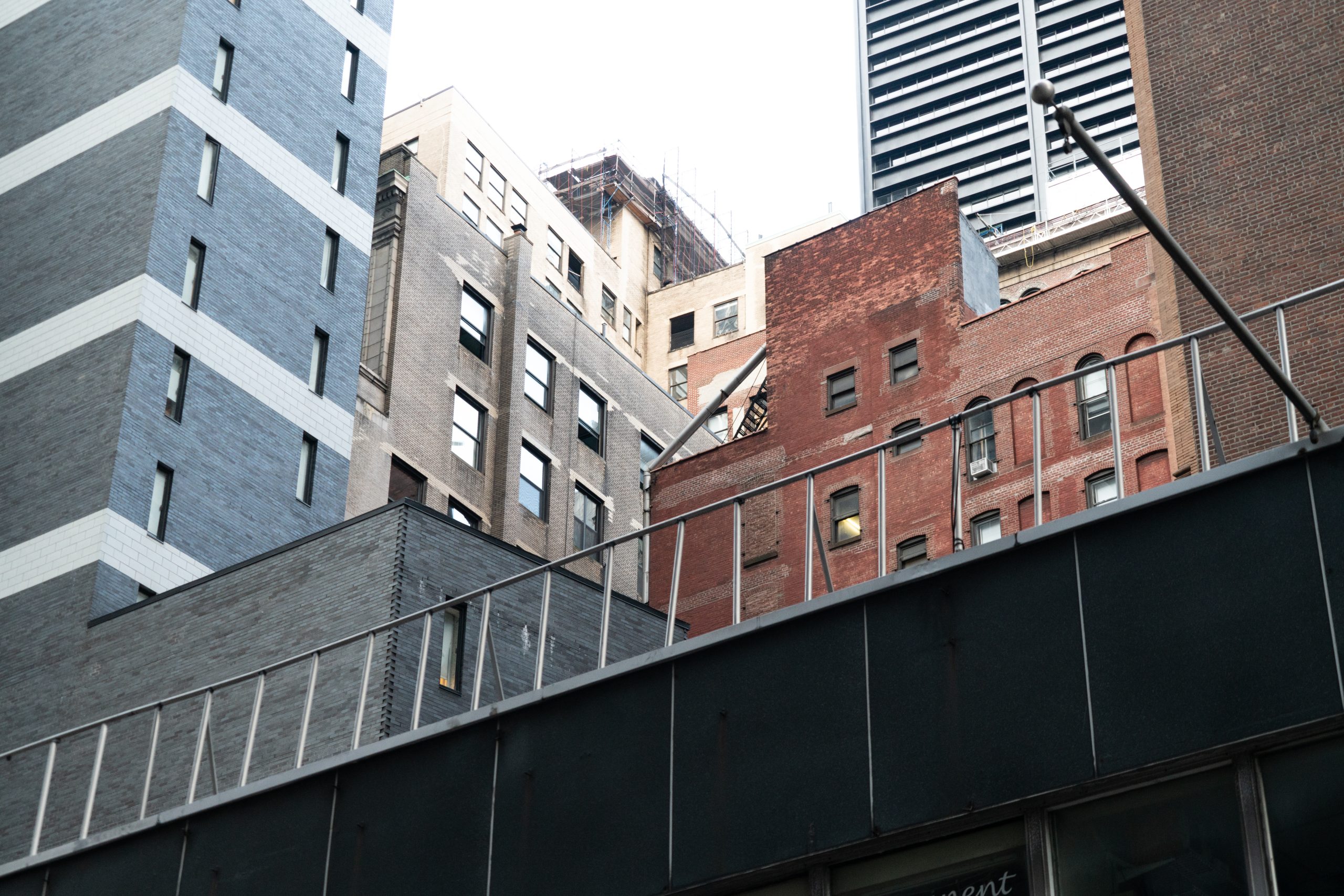How Rent Stabilization Coverage Issues Affect Value in Multi-Family Transactions
June 14, 2018
Michelle Itkowitz spoke at the Long Island Chapter of the Appraisal Institute on June 13, 2018, on “How Rent Stabilization Coverage Issues Affect Value in Multi-Family Transactions”. Here is an excerpt from the materials:
IV. RENT STABILIZATION AND THE NUMBER OF UNITS IN A BUILDING
A. If a Building was built before 1974 and contains six or more units, then the apartments therein are Rent Stabilized, unless certain exceptions apply. This is so, however, even if the building in question had less than six units in 1974, but after to 1974, six units were created in the building. This is so, even if the extra units were (a) illegally created, and (b) subsequently eliminated!
If a Building was built before 1974 and contains six or more units, then the apartments therein are Rent Stabilized. That seems straightforward enough, right? This is so, however, even if the building in question had less than six units in 1974, but after to 1974, six units were created in the building. This is so, even if the extra units were (a) illegally created, and (b) subsequently eliminated!
In Wilson v. One Ten Duane Street Realty Co., 123 AD2d 198 [1stDept 1987], the appellate court which covers Long Island stated:
“The purpose of the [Rent Stabilization Laws] being to extend the protection of Rent Stabilization in the face of a declared emergency brought about by having shortages and their attendant problems, it is best served by following the plain language of the statute and refraining from supplying an uncalled for base date that would only restrict its purpose.”
In Robrish v. Watson, 48 Misc3d 143(A)[App Term, 2nd Dept, 2nd, 11th & 13th Jud Dists 2015] the appellate court stated:
“Landlord commenced this holdover proceeding to recover the “top floor” apartment of a two-family house. At a nonjury trial, landlord conceded that, in 1993 or 1994, he had begun using the house as a “rooming house” and had rented 10 different rooms to 10 different individuals, including tenant. By the time of the trial, tenant was the only individual left living in the house. … The 10 different tenancies entered into by landlord with 10 different individuals for 10 different rooms in his house rendered the house subject to rent stabilization, as housing accommodations in buildings built before January 1, 1974 containing more than six units are subject thereto…The RSC defines a housing accommodation as “[t]hat part of any building or structure, occupied or intended to be occupied by one or more individuals as a residence, home, dwelling unit or apartment”. Under this definition, an individually rented room in a rooming house is a housing accommodation, and therefore, contrary to the Civil Court’s decision, a building with six or more individually rented rooms is subject to rent stabilization, regardless of whether any structural changes were made to the premises… Nor is it of any consequence that the illegal use of the building has ended… Thus, the petition should have been dismissed on the ground that landlord failed to serve the required rent stabilization notices.)”
[Emphasis supplied.]
In Joe Lebnan, LLC v Oliva, 39 Misc3d 31 [App Term, 2nd Dept,2nd,11th & 13th Jud Dists 2013] the court stated:
On this appeal, landlord argues that, notwithstanding that there may have been eight apartments in the building, the apartments are not rent-stabilized. Landlord claims that illegal apartments cannot become rent-stabilized unless the owner knew of and acquiesced in the unlawful conversion of space from commercial to residential use and the owner sought to legalize the conversion. …In Matter of Gracecor Realty Co. v Hargrove (90 NY2d 350 [1997]), the Court of Appeals held that a residentially occupied cubicle in a lodging house was subject to the Rent Stabilization Law. The Court rejected an argument by the Division of Housing and Community Renewal “that the partitioned space . . . cannot be a housing accommodation as a matter of law” … As the Court there noted, the Rent Stabilization Code’s definition of a “housing accommodation” (Rent Stabilization Code [9 NYCRR] § 2520.6 [a]) is that “part of any building or structure, occupied or intended to be occupied by one or more individuals as a residence, home, dwelling unit or apartment” (Matter of Gracecor Realty Co., 90 NY2d at 355 [emphasis omitted]), and this “functional definition is not limited by any physical or structural requirements” (id.; see also White Knight Ltd. v Shea, 10 AD3d 567 [2004]). Accordingly, we find that the Civil Court correctly held that the apartment is rent-stabilized ….
Then there is also Rashid v. Cancel, 9 Misc 3d 130(A) [App. Term 2ndDept, 2nd & 11th JudDists 2005], where the court held:
“In our view, the use of the basement as a sixth housing accommodation over a multi-year period brought the entire building under rent stabilization …The alleged subsequent reduction in the number of housing accommodations to fewer than six, even if done, as landlord claims, after the placement by the Department of Housing Preservation and Development of a violation, did not exempt the remaining units from rent stabilization.”
See also Commercial Hotel, Inc. v. White, 194 Misc2d 26 [App Term 2nd Dept 2002].
And 124 Meserole, LLC v. Recko, 55 Misc 3d 146(A) [App Term, 2nd Dept,2nd,11th & 13th Jud Dists 2017], where the court held that a premises was Rent Stabilized because two rooms in a store that were used residentially with landlord’s knowledge for years constituted “housing accommodations” as defined by the Rent Stabilization Code, which refers to “part of any building or structure,” and brought total number of residential units to six.
B. A Cautionary Tale from a Situation Involving No Illegal Units
I represented a tenant in a case involving a five-unit townhouse in Brooklyn. My client was the last of two tenants in the building, and the new owner of the building wanted her out.
According to the Department of Finance, the building was built in 1900 and contained nine units and was then classified as, “over 6 families without store”. According to the New York City Department of Buildings (“DOB”), the building’s current certificate of occupancy, dated 1985, states that the building now contains five units (“the CO”). The CO indicates that it was obtained after the building was “altered”, and not pursuant to the construction of a new building. The listings of permits and jobs on DOB did not suggest that the building was substantially rehabilitated prior to obtaining the CO.
In any event, there was also an earlier certificate of occupancy on file at DOB (“the 1967 CO”). According to the 1967 CO, the building contained six units in 1967. The 1967 CO, therefore, establishes that from 1967 through 1985, the building was a legal six-family! That can be the end of our inquiry. Because if a building was built before 1974 and contains six or more units, then the apartments therein are Rent Stabilized. NYC Admin. Code 26-505(b). This is so even if the building in question had less than six units in 1974, but subsequent to 1974, six units were created in the building. Wilson v. One Ten Duane, 123 AD2d 198 [1st Dept 1987]. I was able to successfully assert a defense of Rent Stabilization coverage on this tenant’s behalf when the landlord attempted to evict her.
This story is very significant, because this story did NOT involve illegally created units. Rather, in this case, the building had a 1985 CO for only five units and a use consistent therewith. Everything must have looked good to the purchaser. No one bothered, however, to check all the way back to how the building was utilized from 1974 forward. This was a simple lapse in due diligence on the purchaser’s attorney’s part.
C. Determining the Number of Units If There is No Certificate of Occupancy
When there is no CO, we look for a New York City Department of Housing Preservation and Development (“HPD’) “i-card” for information about the building that would typically be contained on the CO. The following is from HPD’s website and explains i-cards:
“HISTORICAL OCCUPANCY RECORDS (INITIAL INSPECTION CARDS)
The Department of Housing and Buildings was an agency of the City of New York responsible for building inspections and maintaining occupancy records. The agency maintained historical occupancy records called Initial Inspection cards (more commonly referred to as ‘I-cards’) which captured occupancy and arrangement information based on the initial inspection of the property by the agency and any subsequent applications filed with that agency during the late 1800s and early 1900s. For buildings without a Certificate of Occupancy (which was not required until 1938), the ‘I-cards’ have been accepted as the legal record of existing occupancy as of the last date indicated on the card. Buildings with I-cards may have more recent legal occupancy records if any lawful alteration or conversion work was performed in the building after the last date on the I-card. For information on alterations or conversions conducted since the last date on the I-card, Department of Buildings records should be consulted, since a Certificate of Occupancy may have been issued or additional plans may have been approved. Pursuant to the New York City Charter, if there is both an I-card and a Certificate of Occupancy for a building, the Certificate of Occupancy controls as to all matters set forth therein.”
I-Cards can, “provide evidence of the inspector’s observations and thus of the nature of the use or occupancy, whether legal or not, but do not amend or supersede the certificate of occupancy or themselves determine the legality of an existing use or occupancy.” In re 345 West 70th Tenants Corp. v. New York City Environmental Control Bd., 143 AD3d 654 [2016].
D. Take Aways for Appraisers for Buildings that Allegedly Have Less Than Six Units
• Look for evidence of illegally created units that may push the total to six:
o Look for SRO units, such as locks on the outsides of bedroom doors.
o Look for illegal basement apartments or railroad apartments divided into two.
o Compare the certificate of occupancy to the use.
• Make sure you check the certificate of occupancy in effect in 1974, and not just the current CO.
• If there is no certificate of occupancy, you can check the I-Card on file with HPD.
• Look in the online White Pages and see how many people list the building as their home address.
• Ask questions of the current owner; sometimes this is the best source of information there is.
itkowitz.com






